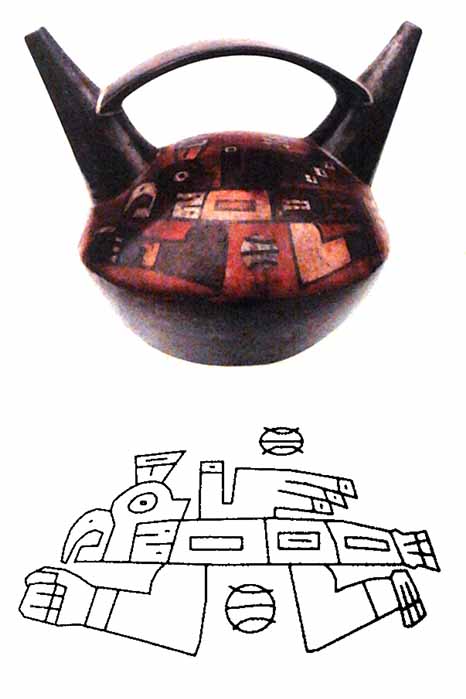
Revisiting The Oracle Of Pachacamac In Peru
Since ancient times, ubiquitous to various cultures, humankind has sought to overcome that which they cannot control, such as healing mysterious afflictions and trying to predict the veiled future, by undertaking pilgrimages to consult oracles. For Andean cultures, Pachacamac was the magnet attracting pilgrims travelling from near and far to access this sacred, energetic center.

15th century Ychsma textile, from Peru’s central coast (CC0)
The Pachacamac complex, located 40 kilometers (24 miles) from Lima, is replete with temples, palaces, pyramids, plazas, causeways, storehouses and graveyards. Grave goods such as textiles and pottery originating from different cultures, attest to pilgrims travelling far to reach it. As many scholars have noted: Pachacamac has a Pan-Andean coding. As an oracle, ceremonial and pilgrimage complex, dating back about 1,800 years ago, it had a long run, flourishing for 1,300 years. To put it into perspective on a global landscape, in Rome around 200 AD Septimus Severus was emperor; in China, Cao Cao rose to power at the end of the Han Dynasty, and the Classic Age of Maya Civilization commenced. The planet was populated by around 300-million people.
Dr. Thomas Cummins, director of Dumbarton Oaks and Professor of Pre-Columbian and Colonial Arts, Harvard University, comments: “ It is one of the longest active religious centers in all of America that attracted “pilgrims” from throughout the Andes including in the Colonial period. It was invoked as the coastal sacred entity that would join in against the Spanish in a cosmic battle in Taqui Onkoy of the 1570s.”
Pacha-Kamaq Deity
The deity, Pacha-Kamaq was also associated with earthquakes. In a coastal myth, Pacha-Kamaq defeated a rival creator god who punished humans for their wickedness by stopping the rain. To the Incas, Pacha-Kamaq was the child of Inti, the powerful sun god and divine ancestor of the Inca. Viracocha was the pre-Inca creator god (assimilated into the Inca Pantheon) who also created Inti, the sun god.

The griffin deity Pacha-Kamaq (Pachacamc) on a Wari pot (Yuraqsiki/CC BY-SA 3.0)
Constructing Pachacamac
Pachacamac’s builders were the Lima Culture (200-600 AD); the Wari Culture (600-800 AD); the Ychsma Culture (1100-1470); and the Incas (1438 – 1471) until their defeat. In the 15th century, the Incas reorganized the complex, adding the Temple to the Sun, a sanctuary for the chosen women or nuns, and a patio at Pilgrim’s Square, making it an integral part of their spiritual and political life.
Like this Preview and want to read on? You can! JOIN US THERE ( with easy, instant access ) and see what you’re missing!! All Premium articles are available in full, with immediate access.
For the price of a cup of coffee, you get this and all the other great benefits at Ancient Origins Premium. And - each time you support AO Premium, you support independent thought and writing.
Dr Richard Marranca is an author, teacher and filmmaker. He has had a Fulbright to teach at the University of Munich, as well as seven National Endowments for the Humanities summer grants. He is the author of Alexander The Great in India: Sunburst Upanisha. Read more at: https://www.richardmarranca.com/
Top Image: Mamaconas or nun’s enclosure at Pachacamac ( Caio/ Adobe Stock)














